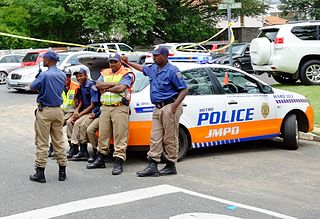The following is a brief description of the sections of the Promotion of Bantu Self-Government Act, 1959: [2]
Definitions and interpretation
- Section 1
Defines the explanations of keywords in the Act.
- Section 2.1
Defines the eight types of Bantu populations.
- Section 2.2
Defines the right of the Governor-General to commissioner-generals for each Bantu population type.
- Section 2.3
Defines that the rights of the commissioner-generals powers, functions and duties are defined in the Act.
- Section 2.4
Defines the commissioner-general employment period as five years or at the pleasure of the Governor-General, not hold another civil service or private position and reside at a place considered acceptable by the minister.
- Section 3
Defines the powers, function, and duties of the commissioner-general to represent the government with each Bantu population group or authority.
- Section 4.1
Defines the rights of the Minister with approval of the Governor-general to appoint a Bantu person to represent the population type.
- Section 4.2
Defines that the representative, after approval from the Governor-general, is the recognised representative for the region.
- Section 4.3
Defines the Governor-general's right to withdraw recognition.
- Section 5.1
Defines the powers, function and duties of the Bantu representative recognised and appointed under section 4.
- Section 5.2
Defines that the representative appoint is deemed to be a headman in relation to the Native Administration Act, 1927 section 2(8).
- Section 6
Defines the amendments to the Native Administration Act, 1927 brought about by this Act.
- Section 7
Defines the insertions into section 4 of the Native Trust and Land Act, 1936, brought about by this Act, allowing the transfer of land by trusts as well as powers, functions, and duties in the former.
- Section 8
Defines the legislative powers of the Bantu authorities.
- Section 9
Defines the amendments to the definitions in section 1 in the Bantu Authorities Act 68, 1951.
- Section 10
Defines the word amendments in section 2(2) in the Bantu Authorities Act 68, 1951.
- Section 11
Defines the word amendments in section 5(1a) and section 7 in the Bantu Authorities Act 68, 1951.
- Section 12
Defines text for the new substitution for section 7 in the Bantu Authorities Act 68, 1951.
- Section 13
Defines text for the new substitution for section 7bis in the Bantu Authorities Act 68, 1951.
- Section 14.1
Defines the ability of the Governor-General to make regulations for the terms of office, remuneration, meeting attendance, etc., for a commissioner-general.
- Section 14.2
Defines that regulations may differ from one Bantu population group to the next.
- Section 14.3
Defines the penalties, fines or imprisonment for contravening or failing to comply with the said regulations.
- Section 15
Defines that the Representation of Natives Act, 1936 is repealed but has no effect on duly elected senators or members of the House of Assembly, between that Act and this acts commencement.
- Section 16
Defines the name of the Act.











